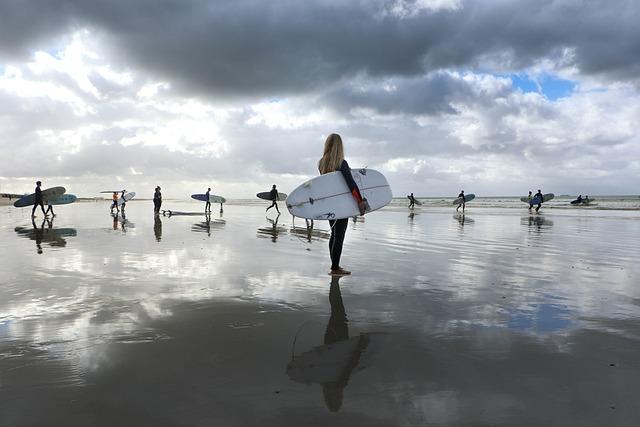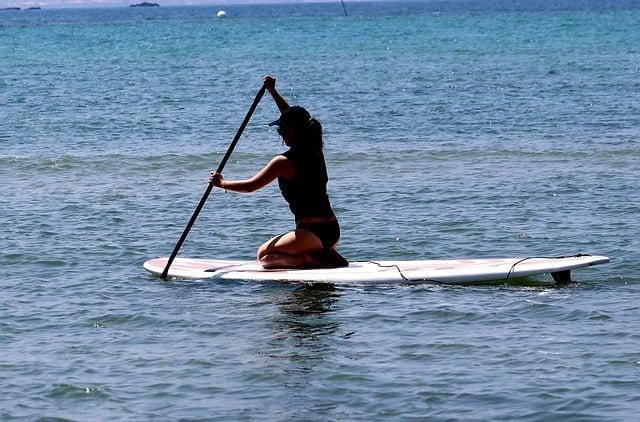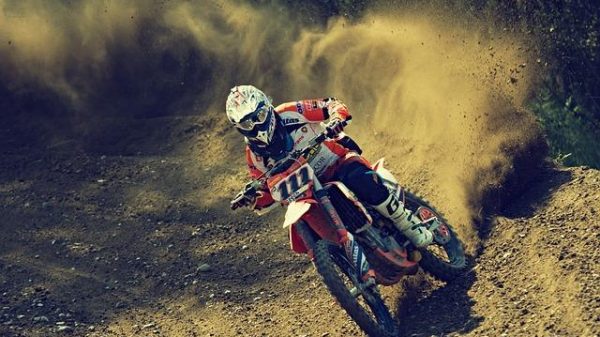Surfing, an exhilarating dance with the ocean’s rhythm, demands not only skill and balance but also physical endurance. Among the challenges faced by surfers, muscle cramps can be an unexpected and debilitating hindrance, particularly during the crucial moments of paddling out. These involuntary contractions can transform an otherwise thrilling experience into a struggle against one’s own body, disrupting the flow and focus needed to navigate through the surf. Understanding how to prevent cramps is essential for surfers who wish to maintain peak performance and enjoy the waves without interruption. This article delves into the physiological factors contributing to muscle cramps and offers evidence-based strategies to mitigate their occurrence, ensuring that surfers can paddle out with confidence and ease. By implementing these preventive measures, both novice and seasoned surfers can enhance their endurance and enjoy a more seamless connection with the ocean.
Understanding the Causes of Cramps in Surfing
Paddling out to catch the perfect wave requires not just skill, but also physical endurance. Muscle cramps are a common issue that can turn a great surf session into a frustrating experience. Understanding the root causes of cramps can help in developing effective strategies to prevent them. Cramps often result from a combination of factors such as dehydration, electrolyte imbalance, and muscle fatigue. When you’re out in the ocean, your body loses fluids and essential minerals like sodium, potassium, and magnesium, which are crucial for muscle function. Additionally, the repetitive paddling motion can strain muscles that aren’t regularly used, leading to fatigue and cramping.
Several lifestyle and training adjustments can be made to mitigate these risks. Consider the following tips to prevent cramps while paddling:
- Stay Hydrated: Drink plenty of water before heading out and consider sports drinks to maintain electrolyte balance.
- Warm-Up Properly: Engage in dynamic stretching and warm-up exercises focused on the shoulders, back, and core muscles.
- Maintain a Balanced Diet: Incorporate foods rich in potassium and magnesium, like bananas and spinach, into your meals.
- Strengthen Core Muscles: Regularly practice exercises that enhance core stability and endurance, such as planks and Pilates.
- Gradual Conditioning: Build up your paddling endurance gradually to acclimate your muscles to the demands of surfing.
By understanding these underlying causes and taking proactive steps, surfers can significantly reduce the occurrence of cramps, leading to more enjoyable and productive sessions on the water.

Effective Stretching Techniques for Surfers
To ensure your surfing sessions are free from the inconvenience of cramps, incorporating a series of effective stretching techniques is essential. Start with dynamic stretches to warm up your muscles before hitting the water. Focus on shoulder circles to loosen up the upper body, followed by trunk rotations to enhance flexibility in your core. Don’t forget the importance of arm swings, which help in promoting blood flow and preparing your paddling muscles.
Post-surfing stretches are equally crucial for recovery and cramp prevention. Engage in static stretches like the cat-cow pose to relieve tension in the back and shoulders, and the downward-facing dog to stretch the hamstrings and calves. Consider the standing quad stretch to target the front of your thighs, which are heavily used while paddling. Regularly practicing these stretches can improve your overall flexibility and endurance, ensuring a more enjoyable surfing experience.
Nutritional Strategies to Minimize Muscle Cramps
Maintaining optimal nutrition is key to warding off muscle cramps while surfing. Ensuring your diet is rich in essential minerals such as potassium, magnesium, and calcium can help keep cramps at bay. These minerals play a crucial role in muscle function and can be found in foods like bananas, leafy greens, nuts, and dairy products. Additionally, staying hydrated is paramount. Dehydration is a common trigger for cramps, so drink plenty of water throughout the day and consider incorporating electrolytes into your hydration strategy.
To further support muscle function and prevent cramps, consider integrating the following dietary habits:
- Balanced meals: Ensure your meals include a variety of macronutrients and micronutrients to support overall muscle health.
- Pre-surf snacks: Consume a light snack rich in carbohydrates and protein about an hour before hitting the waves to provide sustained energy and muscle support.
- Post-surf recovery: After your session, refuel with foods high in protein and complex carbohydrates to aid muscle recovery and replenish energy stores.

Hydration and Its Role in Preventing Cramps
Proper hydration plays a crucial role in maintaining optimal muscle function, especially during physically demanding activities like surfing. When you’re out on the water, your body loses fluids through sweat and exertion, even if you’re not aware of it. Dehydration can lead to muscle cramps, which are not only uncomfortable but can also hinder your performance and enjoyment. To combat this, ensure you’re drinking enough water before, during, and after your surf session.
Consider these tips to stay hydrated and keep cramps at bay:
- Pre-hydrate: Start your day with a glass of water and continue sipping fluids as you prepare for your surf.
- Bring a water bottle: Keep it within reach on the beach to remind yourself to drink regularly.
- Electrolyte balance: Incorporate drinks that contain electrolytes to replenish what you lose through sweat.
- Listen to your body: Thirst is a late indicator of dehydration, so aim to drink before you feel thirsty.
By prioritizing hydration, you can significantly reduce the risk of cramps, ensuring a more enjoyable and successful paddling experience.










